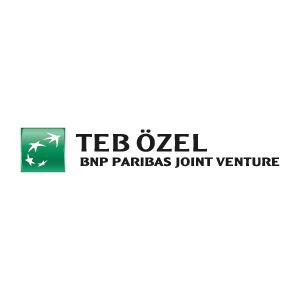Trade and industrial policies designed to support domestic industries can unintentionally kindle technological progress abroad. This column examines the case of rare earth elements – a group of metals essential to producing batteries, lasers, and other high-tech components. These elements are not only critical to manufacturing at the knowledge frontier; they also have a low elasticity of substitution, inelastic supply, and high production and processing concentration. When China introduced export restrictions on rare earth elements in 2010, a global surge in innovation and exports in downstream sectors outside China swiftly followed.
In recent years, the strategic use of trade and industrial policy tools – such as export restrictions – has fuelled heated debate. From semiconductors to electric vehicles, firms and governments are grappling with how to secure critical inputs and stay competitive amid growing geopolitical tensions.
Nowhere is this debate more visible than in the case of rare earth elements (REE) – a group of 17 chemically similar metals essential for the production of critical technologies like permanent magnets, catalysts, batteries, lasers, and other high-tech components. These materials have become a flashpoint in a much broader struggle over geopolitical leverage and industrial resilience. China has recently imposed export restrictions on several REEs to put pressure on the US in the ongoing trade war.
What happens when a dominant supplier decides to cut the supply? This question shifted from hypothetical to urgent in 2010, when China, then supplying 98% of global REE mineral output, first imposed strict export controls. China maintained the controls until a WTO ruling in 2015 compelled it to lift them. These restrictions triggered a dramatic surge in REE prices – up to 45-fold for some elements.
This episode is often framed as a cautionary tale of supply chain fragility, but it also reveals a more dynamic and potentially underappreciated mechanism: the capacity of firms and industries to quickly respond to adverse input shocks with massive innovation and factor reallocation. This argument (based on Acemoglu 2002) posits that when a hard-to-substitute input becomes scarce or costly – due to a tax, regulation, or supply shock – R&D efforts can shift toward increasing the efficiency of that input, reducing its usage, or substituting it entirely. Empirical work has supported this framework in various settings, including energy (Popp 2002), fuel-efficient vehicles (Aghion et al. 2016), and textiles (Hanlon 2015).
In a recent paper (Alfaro et al. 2025), we explore how export restrictions on strategic inputs can redirect technological change in downstream industries in third countries, an unexplored new channel. We show that China’s export restrictions on REEs led to a measurable increase in innovation and productivity in REE-intensive downstream industries outside of China, as well as to a surge in their exports. By contrast, China’s downstream industries did not benefit from access to cheap REE inputs.
Rare earth elements
Four distinctive features of REEs make this kind of technological response particularly relevant. First, REEs are used in a wide array of industries operating at the global knowledge frontier, including electronics, aerospace, medical devices, and clean energy. Their applications are often highly specialised and technologically sophisticated. Second, most REEs are hard to substitute in specific uses. While the total quantities involved are often small, their functional importance is high, and physical substitutes are limited due to unique magnetic, luminescent, and catalytic properties (USGS 2002, Graedel et al. 2015). Third, their supply is notoriously inelastic. They are often byproducts of other mining operations, and require complex, toxic, and capital-intensive processing (Nassar et al. 2015, EPA 2012). Finally, their production – particularly their processing – are among the most geographically concentrated in the world, with China playing the dominant role.
Mapping REE exposure and sensitivity: New measures
One of the first challenges in analysing this shock is the data. REEs are not explicitly reported in standard input-output (IO) tables or trade datasets. To facilitate this analysis, we first construct a new IO table that maps REE usage across industries in the US. We combine detailed REE usage data from the US Geological Survey with REE price data, and match REE applications to specific industries in the US supply-use tables – such as magnets, batteries, and catalysts – at the level of individual elements.
This augmented IO framework enables us to calculate the total REE input requirement for each industry, distinguishing between elements such as Neodymium, Lanthanum, and Dysprosium. These elements differ not only in price and volume but also in substitutability – a key determinant of industry-level vulnerability to supply shocks. To quantify this, we incorporate the substitutability index developed by Graedel et al. (2015), which rates each REE based on its physical-chemical ability to be replaced in its primary industrial applications. We then calculate an industry-level exposure metric, or REE sensitivity, by weighing each element’s total input requirement by its technological complementarity score. This composite measure captures both the amount of each REE an industry uses and the difficulty of substituting that element.
Effects: Innovation, productivity, and downstream exports in third countries
Armed with this new exposure metric, we analyse the global response to the 2010 shock. We use difference-in-differences estimation with continuous treatment intensity to compare outcomes across industries and countries before and after the policy shift. Our outcomes of interest include the rate of REE-related innovation, productivity growth, and export performance. To measure innovation specifically related to REEs, we use a large language model (LLM) to classify the universe of global patents based on whether they improve REE efficiency or enable substitution, and map these patents onto their respective industry of application.
Outside of China, downstream industries that were highly exposed to the shock – those that rely heavily on REEs that are particularly difficult to substitute – responded with faster growth in REE-saving patents, higher productivity, and stronger export performance after 2010. These effects were most pronounced in Japan and Europe, where downstream firms adapted to sharply higher world REE prices and supply uncertainty. For example, in Japan, a one standard deviation increase in REE sensitivity is associated with a 0.5 percentage point higher annual growth rate in TFP. These industries also saw relatively faster export growth, of 0.3 percentage points per year over the 2010–2018 period compared to less exposed industries.
Directed technological change: Linking trade and innovation in downstream sectors in third countries
To further explore these mechanisms, our paper introduces a quantitative general equilibrium model of trade and innovation that embeds Acemoglu’s (2002) theory of directed technological change within a multi-country, multi-sector trade model with input-output linkages (based on Caliendo and Parro 2015, Fadinger et al. 2024).
The model captures how firms allocate innovation efforts toward improving productivity in REE or labour inputs, depending on the relative prices and substitutability of these inputs. The production structure features a nested CES function for industry output combining REE inputs and labour, with sector-specific elasticities of substitution and an intermediate bundle.
Estimating elasticities of factor substitution: A new method
Because standard data on REE expenditure shares are unavailable, we develop a novel method to estimate these substitution elasticities using relative patenting rates and REE price variation across countries. The estimates suggest that REEs and labour are gross complements in most industries, implying that a rise in REE prices increases the incentive to innovate in REE-saving technologies, rather than substituting REEs entirely.
The model is calibrated using data from the World Input-Output Database (WIOD). Each sector’s REE intensity and substitution elasticity are recovered using US-based industry data and patent-based measures of innovation.
Simulating the shock: Export taxes and endogenous innovation
Our model simulations confirm the empirical patterns. When innovation is allowed to adjust endogenously, an REE export tax imposed by China causes REE-intensive industries to expand outside China and contract inside China relative to other industries. The innovation response – driven by firms reallocating R&D toward REE-saving technologies – mitigates most of the negative impact on productivity and aggregate welfare that would otherwise result from the supply shock. In a counterfactual scenario where technology remains fixed, the same policy yields significantly worse global outcomes and substantially larger benefits for China.
Policy implications
Concentration in REE has elevated concerns about economic vulnerability and sparked debates over the appropriate role of trade and industrial policy in managing global value chains. In short, the REE episode demonstrates how input shocks – particularly when applied to essential, low-substitution materials – can catalyse broad reconfigurations in innovation and production. Such shocks can redirect the trajectory of technological change, strongly cushioning the shock’s impact.
In a world where trade and industrial policy is back on the agenda (see Alfaro and Chor 2023), the rare earth story offers a powerful reminder that the impact of trade restrictions is complex and depends on how firms and industries adapt, with innovation being an important channel. In line with our argument, NVidia executives have recently argued that US export controls on high-tech chips to China have triggered a strong innovation response in China – potentially increasing Chinese capabilities in downstream industries, such as AI, instead of curbing them (Financial Times 2023). Understanding these dynamic responses is essential for designing effective and forward-looking industrial policy.
Source : VOXeu



































































